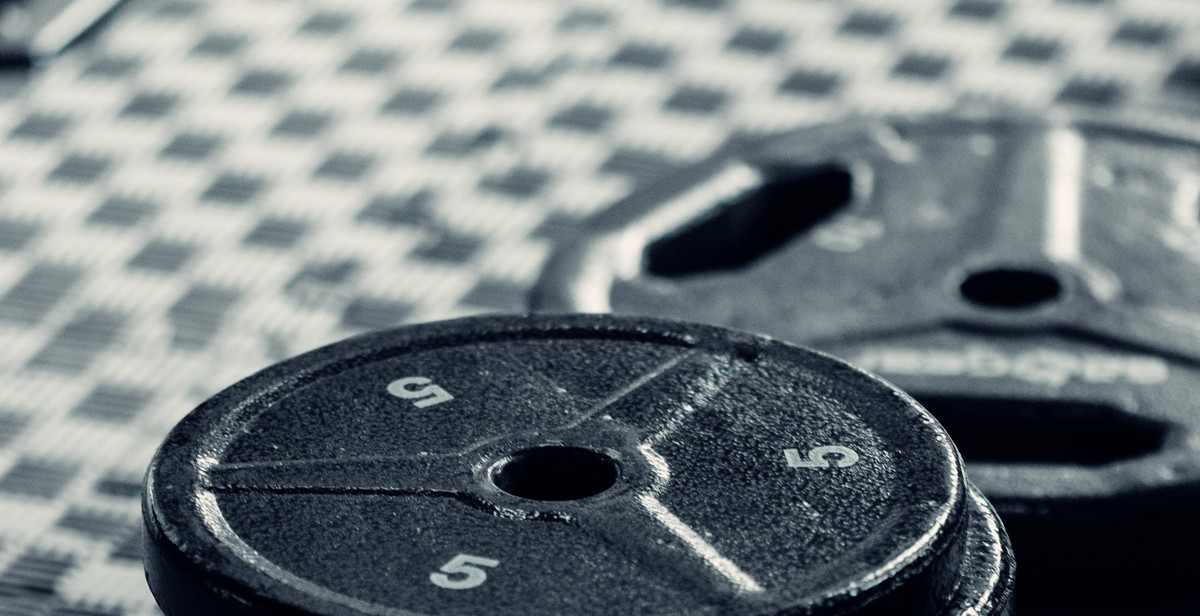Introduction: What is High-Intensity Interval Training (HIIT)?
High-Intensity Interval Training (HIIT) is a type of workout that involves short bursts of intense exercise followed by periods of rest or low-intensity activity. This type of training has gained popularity in recent years due to its effectiveness in burning fat, increasing endurance, and improving overall fitness levels.
HIIT workouts typically last between 20-30 minutes, making them a great option for people with busy schedules. These workouts can be done with little to no equipment, making them accessible to anyone, anywhere.
The science behind HIIT is simple: the intense bursts of exercise force your body to work harder, leading to an increase in heart rate and oxygen consumption. This results in a greater calorie burn during and after the workout, known as the afterburn effect.
HIIT workouts can be customized to fit any fitness level or goal, whether it be weight loss, muscle gain, or overall health and wellness. In this article, we will explore the benefits of HIIT and provide tips on how to design a high-intensity interval training workout that is effective and safe.

Benefits of HIIT Workouts
High-Intensity Interval Training (HIIT) has become increasingly popular in recent years due to its many benefits. Here are some of the top benefits of incorporating HIIT workouts into your fitness routine:
Burn More Calories in Less Time
One of the biggest benefits of HIIT workouts is that they are incredibly efficient at burning calories. HIIT workouts typically involve short bursts of intense exercise followed by periods of rest or active recovery. This type of training has been shown to burn more calories than traditional steady-state cardio workouts, even in a shorter amount of time.
Increase Your Metabolism
HIIT workouts not only burn calories during the workout but also increase your metabolism for hours after the workout is over. This is due to a phenomenon called excess post-exercise oxygen consumption (EPOC), which causes your body to continue burning calories at an elevated rate after the workout is complete.
Improve Cardiovascular Health
HIIT workouts have been shown to improve cardiovascular health by increasing your heart rate and improving your body’s ability to use oxygen. This can lead to a decrease in blood pressure and a lower risk of heart disease.
Build Lean Muscle Mass
HIIT workouts are not just great for burning fat, but they can also help you build lean muscle mass. This is because the short bursts of intense exercise stimulate the growth of muscle fibers, leading to increased strength and muscle definition.
Convenience and Flexibility
HIIT workouts can be done anywhere, anytime, with little to no equipment. This makes them a convenient and flexible option for people with busy schedules or limited access to a gym. Additionally, HIIT workouts can be easily modified to fit any fitness level, making them accessible to beginners and advanced athletes alike.
| Benefits of HIIT Workouts |
|---|
| Burn More Calories in Less Time |
| Increase Your Metabolism |
| Improve Cardiovascular Health |
| Build Lean Muscle Mass |
| Convenience and Flexibility |
Overall, incorporating HIIT workouts into your fitness routine can provide a wide range of benefits, from burning more calories in less time to improving cardiovascular health and building lean muscle mass. Whether you’re a beginner or an experienced athlete, HIIT workouts can be easily modified to fit your fitness level and schedule, making them a convenient and effective option for achieving your fitness goals.

Designing a HIIT Workout
High-Intensity Interval Training (HIIT) is a popular workout style that involves short bursts of intense exercise followed by periods of rest. It’s a great way to get a full-body workout in a short amount of time, and it’s also an effective way to burn fat and build endurance.
Here are the steps to designing a HIIT workout:
Step 1: Determine Your Goals
The first step in designing a HIIT workout is to determine your fitness goals. Are you looking to build strength, increase endurance, or lose weight? Your goals will determine the type of exercises and intervals you choose for your workout.
Step 2: Choose Your Exercises
Once you’ve determined your fitness goals, the next step is to choose your exercises. HIIT workouts typically include a mix of cardio and strength exercises, such as jumping jacks, squats, lunges, push-ups, and burpees. Choose exercises that target the muscle groups you want to work on and that you enjoy doing.
Step 3: Determine Your Work and Rest Intervals
The work and rest intervals are crucial to a successful HIIT workout. The work interval is the time you spend doing the exercise at maximum intensity, while the rest interval is the time you spend recovering before the next exercise. The length of each interval will depend on your fitness level and goals. For example, if your goal is to build endurance, you may want to choose longer work intervals and shorter rest intervals.
Step 4: Choose Your Workout Structure
There are many different ways to structure a HIIT workout, but some popular options include:
- Circuit training: Perform a set of exercises back-to-back with little to no rest in between.
- Tabata training: Perform each exercise for 20 seconds, followed by 10 seconds of rest, for a total of 4 minutes.
- Interval training: Alternate between high-intensity and low-intensity exercises.
Choose the workout structure that best aligns with your goals and fitness level.
Step 5: Warm Up and Cool Down
Before starting your HIIT workout, it’s important to warm up your muscles and get your heart rate up. A good warm-up could include jogging in place, jumping jacks, and arm circles. After your workout, take some time to cool down and stretch your muscles to prevent injury.
By following these steps, you can design a HIIT workout that is tailored to your fitness goals and level. Remember to listen to your body, take breaks when needed, and stay hydrated throughout your workout.

Sample HIIT Workouts
Here are some sample HIIT workouts that you can use as a starting point for your own training program:
Workout 1: Bodyweight Circuit
This workout is perfect for those who prefer bodyweight exercises and want to train at home or in a park. It consists of six exercises that you will perform for 30 seconds each, with a 10-second rest between them. After completing all six exercises, rest for one minute and then repeat the circuit for a total of three rounds.
- Jumping jacks
- Push-ups
- Mountain climbers
- Squats
- Plank
- Burpees
Workout 2: Tabata Intervals
This workout is based on the Tabata protocol, which involves performing an exercise for 20 seconds at maximum effort, followed by 10 seconds of rest, for a total of eight rounds. You will perform two exercises in this workout, alternating between them for a total of four minutes. After completing both exercises, rest for one minute and then repeat the circuit for a total of three rounds.
| Exercise | Rounds |
|---|---|
| Burpees | 8 |
| Jumping lunges | 8 |
Workout 3: Hill Sprints
This workout is perfect for those who want to train outdoors and challenge their cardiovascular system. Find a hill with a moderate incline and sprint up it for 30 seconds at maximum effort, followed by a 90-second rest. Repeat the hill sprints for a total of six rounds.
Workout 4: Kettlebell Complex
This workout is perfect for those who want to incorporate kettlebells into their training program. It consists of four exercises that you will perform for 30 seconds each, with a 10-second rest between them. After completing all four exercises, rest for one minute and then repeat the circuit for a total of three rounds.
- Kettlebell swings
- Kettlebell goblet squats
- Kettlebell clean and press
- Kettlebell Turkish get-ups
Workout 5: Battle Ropes Circuit
This workout is perfect for those who want to challenge their upper body and core muscles. It consists of four exercises that you will perform for 30 seconds each, with a 10-second rest between them. After completing all four exercises, rest for one minute and then repeat the circuit for a total of three rounds.
- Alternating waves
- In-and-out waves
- Slams
- Side-to-side waves

Tips for Success
Designing a high-intensity interval training (HIIT) workout can be challenging, but with the right approach, you can create a program that is both effective and enjoyable. Here are some tips to help you succeed:
Start Slow and Progress Gradually
HIIT workouts are intense, so it’s important to start slow and gradually increase the intensity over time. This will help prevent injury and ensure that your body is ready for the demands of a high-intensity workout.
Listen to Your Body
It’s important to listen to your body and pay attention to any signs of fatigue or pain. If you feel like you need a break, take one. Overtraining can lead to injury and burnout, so it’s important to give your body the rest it needs.
Stay Hydrated and Fuel Your Body
Proper hydration and nutrition are essential for any workout program. Make sure you drink plenty of water before, during, and after your workouts, and fuel your body with healthy foods that provide the energy you need to power through your workouts.
Mix It Up
HIIT workouts can get repetitive if you do the same exercises over and over again. To keep things interesting, mix up your workout routine by incorporating different exercises, equipment, and workout formats.
Find a Workout Partner
Having a workout partner can provide motivation and accountability, making it easier to stick to your workout program. Plus, working out with a partner can make your workouts more enjoyable and help you push yourself harder.
By following these tips, you can design a HIIT workout program that is safe, effective, and enjoyable. Remember to start slow, listen to your body, stay hydrated and fueled, mix up your workouts, and find a workout partner to help you stay on track.
